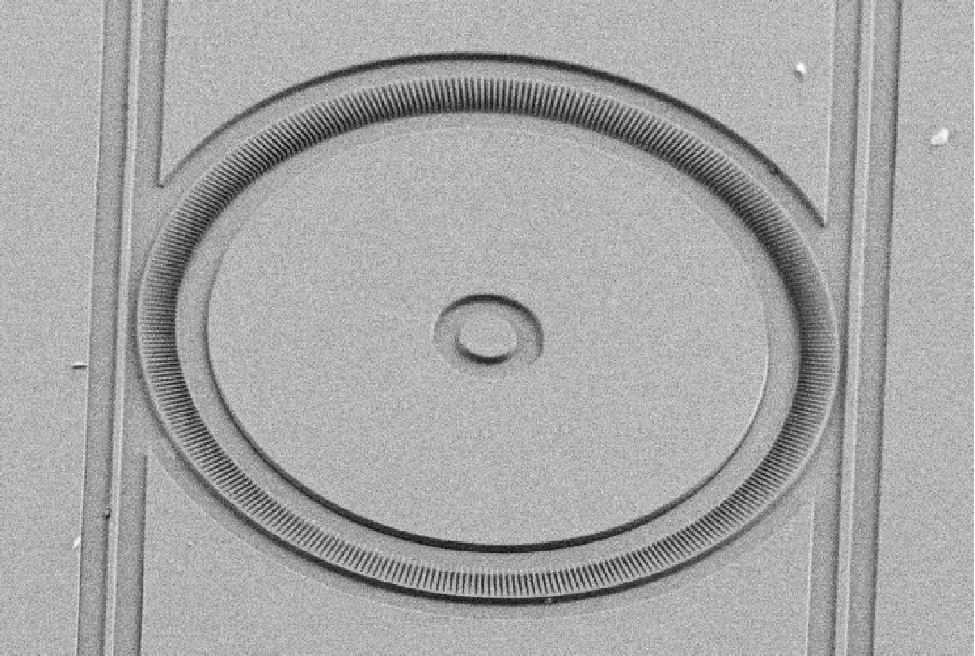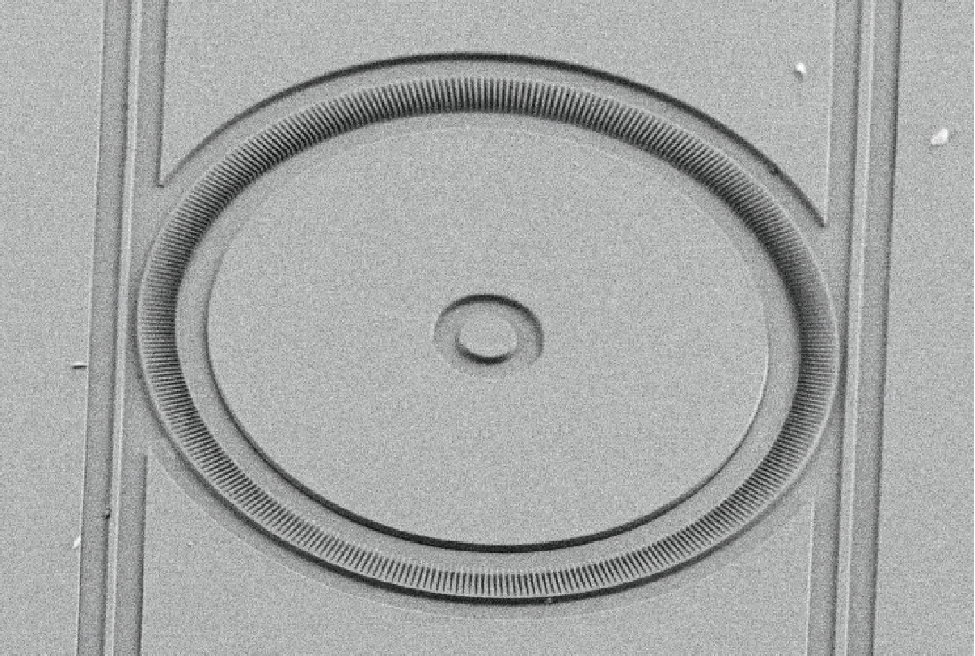A Möbius Strip for Light
Light can travel along a closed path inside a ring of glass or similar material, reflecting repeatedly from the interior surface. Although such closed-loop waves generally have integer values of angular momentum, researchers using a small gear-shaped ring have now demonstrated an ability to generate similar waves with unusual fractional values of angular momentum [1]. As in a Möbius strip, the waves must make two round trips to return to their initial configuration. The ability to tune the angular momentum in this way could give researchers more precise control of light in advanced devices such as single-photon emitters.
Physicists refer to the closed-loop waves as whispering gallery modes, named after an acoustic effect in round rooms, where sounds reflect multiple times off the walls. Ordinarily, a wave of this kind moves around a single closed loop before retracing its earlier path. The phase of the electric field associated with the wave front must go through an integer number M of cycles in making one loop. Technically, this condition also implies that the photons associated with the wave will carry an integer number M units of angular momentum.
But as researchers led by Xiyuan Lu of the National Institute of Standards and Technology in Maryland have now demonstrated, it’s possible to generate more exotic waves having fractional angular momentum [1]. This can be done by slightly altering the structure of the ring that carries the light. A wave can be forced to make more than one loop before returning to the same field configuration that it started with. “For the first time, we’re generating light in a fashion of the Möbius strip,” says Lu.
In previous work, Lu and colleagues fabricated a so-called photonic crystal microring by etching a precise sequence of microscopic notches into the inner edge of a small ring of silicon nitride, a semiconducting material. The periodic modulation of the inner surface alters the optical properties of the material, resulting in a tenfold reduction in the speed of the light as it moves around the ring. In calculations, simulations, and experiments, the researchers have now also shown that this periodic modulation allows the material to carry light waves with unusual properties.
In particular, if the ring has an odd number of notches N, the team’s calculations indicate that it will then support a set of so-called hybrid waves, which need to travel around the ring twice to complete the field cycling. Lu and colleagues demonstrated the effect using a gear with radius 25 micrometers and having N = 333, leading to an effective angular momentum value of N/2, or 166.5.
The researchers were able to observe the hybrid waves by imaging the small amount of light that scatters out of the ring on each trip. They found that each hybrid wave produced a corresponding pattern of bright spots around the ring—with the number of spots always being odd. For example, the fundamental mode (the wave with the smallest number of spots) was bright on one side of the ring and dark on the other. The odd numbers of bright spots contrasts with the even counts that characterize normal whispering gallery systems.
Previous work has generated fractional angular momentum states in light beams called optical vortices, Lu notes, but this is the first time it has been achieved in a whispering gallery mode. This is significant, he says, because this arrangement allows researchers to generate light at very high intensities in small volumes, thereby greatly enhancing its possible interaction with matter.
“This is great work by a really outstanding lab,” says optical physicist John Donegan of Trinity College Dublin. As he points out, most previous work on such states of precise optical angular momentum have used large-scale systems. “A key novelty and importance of this work,” he says, “is demonstrating such states in a micron-scale structure suitable for integration into microscale photonic chips.”
Lu expects the advance to be useful for gaining more precise control over light in other situations. “One interesting application is to use such light to interact with atomic gases,” he says, “particularly looking to improve the angular steering of the emitted light.”
–Mark Buchanan
Mark Buchanan is a freelance science writer who splits his time between Abergavenny, UK, and Notre Dame de Courson, France.
References
- M. Wang et al., “Fractional optical angular momentum and multi-defect-mediated mode renormalization and orientation control in photonic crystal microring resonators,” Phys. Rev. Lett. 129, 186101 (2022).





